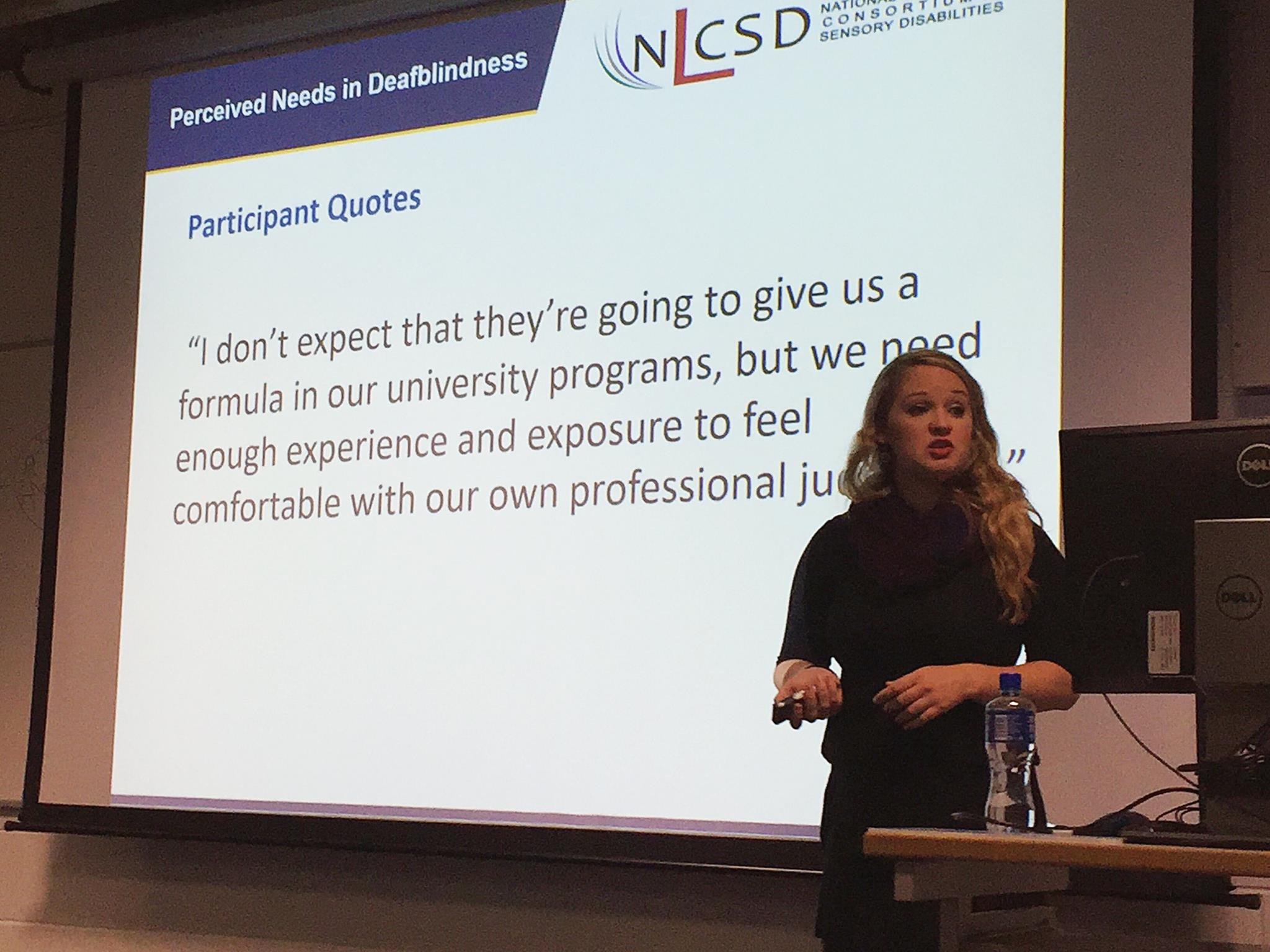International Mobility Conference, Dublin, Ireland
Tara Brown-Ogilvie, Cohort 2 Scholar

Photo of Tara Brown-Ogilvitanding on a platform in front of a power point projected on a screen behind her. She is wearing a black dress, purple scarf, and black heels while speaking to an audience with a power point clicker in her hand. The power-point encompasses the University of Northern Colorado (UNC) colors in gold and blue. With text that reads, Perceived Needs in Deafblindness: Participant Quote..."I don't expect that they're going to give us a formula in our university programs, but we need enough experience and exposure to feel comfortable with our own professional judgement" with a NLCSD logo in the upper right hand corner.
Attending the International Mobility Conference (IMC), I was able to share space with some of the greatest minds in Orientation and Mobility (OMS). I personally love to see how OMS, professors, and agencies across the world are handling the same issues that we are experiencing in the United States. The highlights for me being a workshop on working with blind or visually impaired students who are also wheelchair users, a lecture on cane identification for travelers who are deafblind, and the opportunity to present on a pilot study conducted at the University of Northern Colorado (UNC) with Dr. Silvia Correa-Torres. Entitled, Perceived Needs of Orientation & Mobility Specialists Who Work with Individuals Who Are Deafblind.
As I had not had the opportunity to attend a workshop by the eminent Scott Crawford on his techniques for working with wheelchair mobility, I was ecstatic to learn everything I could from him for myself and my colleagues. As participants, we were able to be both the student and the instructor to experience both manual and power wheelchairs. Practicing techniques that could apply to students with low vision, blindness, along with dual sensory loss. In conclusion of the session, we were given Scott Crawford contact information, which I feel is an invaluable resource for serving students with complex needs in the future.
For the session on identification for travelers who are deafblind, a representative from ONCE spoke of a long cane with double red and white stripes in Spain to identify individuals with dual sensory loss. However, a point was made that although the cane may be created, but was there enough awareness for it to be effective? The reply was of course that it is a process in the making, that awareness activities had taken place, but not to the extent of creating nationwide awareness yet in Spain. To this topic, I inquired as to creating awareness through driver licensing programs. As in the United States, the “white cane law” is often learned through a state’s driver manual, so why not add a page on canes for those who are deafblind as a way to educate a large majority of the nation’s population? This idea was seen as very interesting and perhaps a project for the future.
Lastly, the twenty-minute oral presentation discussed the aforementioned qualitative study which involved interviewing OMS about their experiences and perceived needs when working with students who are deafblind in order to provide implications for graduate orientation and mobility programs. At the time of the conference, eight OMS were recruited for 30-45 minute phone interviews. These interviews were then transcribed verbatim, organized with NVivo 11 software, and analyzed using a constant comparison method to identify key themes as well as extract salient participant quotes. The presentation itself was well received and it was a great experience to speak on an international platform about the needs in the fields of deafblindness that seemed to resonate with the international audience. As a result, I now feel more encouraged to continue working with Dr. Silvia Correa-Torres in expanding the study to 15 participants with hopes to present a poster at the 2017 Deafblind International conference in Denmark.
-- Tara Brown-Ogilvie